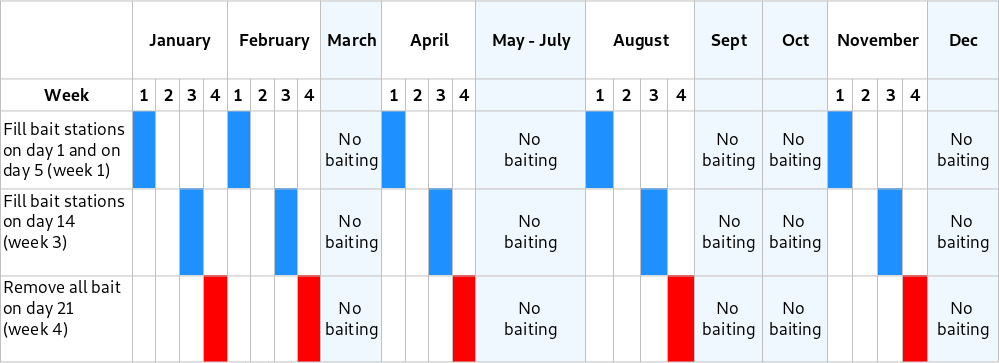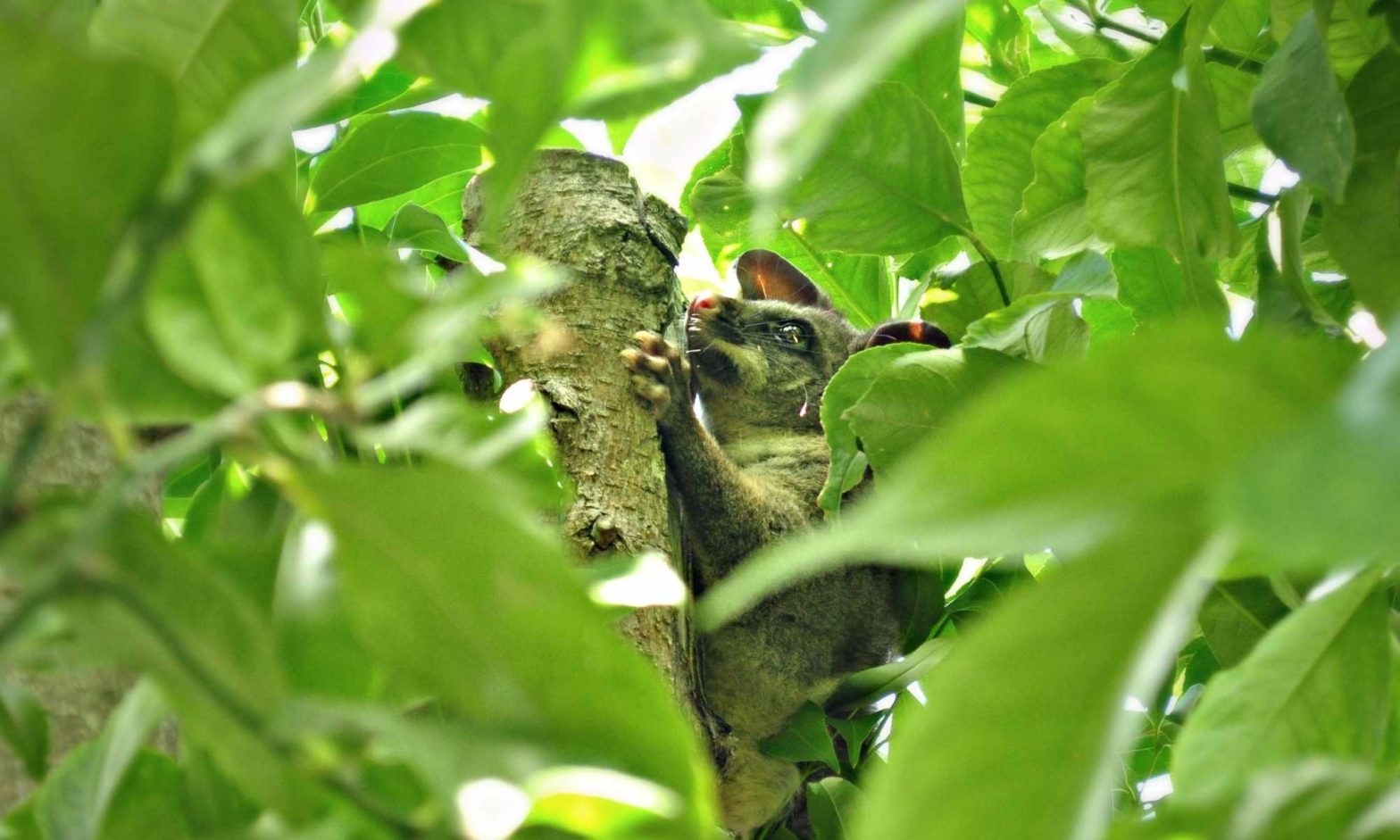You’ll get the best results from rat bait stations if you “pulse” your baiting. That is, only put out bait at specific times of the year. This is especially important when using modern baits such as Brodifacoum and Bromadialone, as they have a delayed action. This means that a rat that has eaten enough bait to kill itself will feel and act perfectly normally for several days afterwards, including eating more bait. So if you supply bait continuously all year round you will be wasting it down the gullets of “dead rats walking”. Waiting just long enough for each group of rats to die before putting out more bait saves you bait, time, and effort.
.
Following a pulse plan is good because it:
- Knocks down rat populations at the right time (just before and during bird nesting season).
- Stops bait being eaten by “dead rats walking”.
- Reduces the amount of bait you need.
- Minimises the amount of toxin that goes out into the environment
- Prevents old bait hanging around in bait stations to go mouldy and put rats off it.
- Saves you effort by not putting out bait in the autumn, when rats aren’t interested in it anyway because there’s lots of other food around.
.
Pulse for rat control only.
If you’re using multi-purpose philproof bait stations, only begin a pulsing pattern after you’ve knocked down your possum population, because possums love bait and eat a lot in a night, so a big possum population will empty out your bait stations pretty quick, leaving none for the rats. If you’re using rat-only bait stations (like the Pied Piper) you can start pulsing right away.
.
Basic pulsing.
If monitoring shows your rat numbers are high, put out bait at the start of every school holiday month, plus February. So baiting is only done in January, February, April, August, and November. Don’t put out any bait for the other 7 months of the year. To remember it easily, think: “School holidays four, plus Feb is one more”.
If monitoring shows you’re doing a good job keeping rat populations low, then skip one pulse in either January or February, and just do four pulses a year.
Remove all leftover bait at the end of each baiting period, as uneaten bait quickly becomes damp, mouldy and covered in slugs, and will put rats off from coming to the bait station. Dispose of old bait by wrapping it up securely and putting it in your rubbish bin.

.
Advanced pulsing
If you’re a methodical type of person and you want really effective rat control to contractor-level standards of bait efficiency, you can also pulse within the bait months themselves. So you put out bait in weeks 1 and 3 of the month, and remove it in week 4.
This chart shows how it works.

Happy baiting! (And thanks, Auckland Council, for the chart info.)
